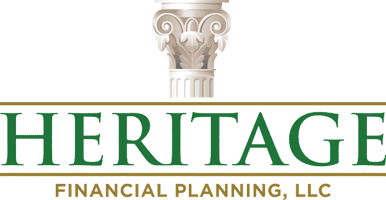When preparing for your retirement, think about how much income you may need each year to fund the lifestyle you want. To help maintain your living standard, you may need to save enough money to supplement other sources of retirement income, such as a company pension and/or Social Security. It is also important to be aware of how your age factors into your retirement decisions. Here are some important age milestones to consider:
Age 55.
If you take an early retirement, quit, or are otherwise terminated from employment, you can generally withdraw money from 401(k), 403(b), and profit-sharing plans without being subject to a 10% Federal income tax penalty for early withdrawals. As specified in IRS Publication 575, the following apply: you must reach age 55 by December 31 of the year you leave the workforce; money must be distributed to you from your employer’s plan and cannot be transferred to an Individual Retirement Account (IRA); early withdrawals are subject to the plan’s provisions; and only money from your last employer’s plan qualifies (not funds from previous employers). You may take early distributions from a traditional IRA without penalty, provided you receive “substantially equal periodic payments.” Since certain rules govern this provision, be sure to consult a qualified tax professional.
Age 59½.
Generally, you can withdraw money from traditional IRAs and qualified retirement plans after the age of 59½ without being subject to the 10% tax penalty, if plan-specific qualifications are met. Ordinary income tax is due if your contributions were tax-deductible. No income tax or penalty applies to distributions from a Roth IRA, provided you have reached age 59½ and have owned the account for at least five tax years.
Age 60.
Widows and widowers may be eligible for Social Security benefits. For the most up-to-date information, visit the Social Security Administration’s website at www.ssa.gov.
Age 62.
Some companies may allow retirement at 62 with full pension plan benefits. This is also the earliest age for receiving regular Social Security benefits, but the benefit amount is permanently lower than its potential maximum.
Ages 62–64.
For those who are working and collecting Social Security benefits while younger than full retirement age—the age at which an individual is eligible to receive full Social Security benefits—the earnings threshold is $15,480 for 2014. One dollar in benefits is withheld (a “give back”) for every $2 earned above that amount. A portion of benefits may also be taxed as income based on a complex formula that includes wages and tax-exempt income.
Age 65.
Many company pension plans provide full benefits at this age. However, the age may vary by the company plan. Medicare eligibility also generally begins at age 65.
Ages 65–67 (or the year in which full retirement age is attained).
Traditionally, full retirement age was 65. However, for those born between 1938 and 1959, full retirement age has been rising incrementally, and for those born in 1960 or later, the age for receiving full benefits is 67. The lower earnings threshold amount still applies for years prior to full retirement age, and a second earnings threshold rule applies for the year in which full retirement age is attained.
For those who are working and receiving Social Security benefits, there is a benefit give-back in 2014 of $1 for every $3 over $41,400 earned in the months prior to attaining full retirement. Once full retirement age is attained, the earnings threshold no longer applies, and a portion of benefits may be taxed as income based on a complex formula that includes wages and tax-exempt income.
Age 70½.
Required minimum distributions (RMDs) from qualified retirement plans, such as a 401(k) or IRA, must generally begin by April 1 of the calendar year following the year in which you reach age 70½. Roth IRAs, however, are not subject to the age 70½ mandatory distribution rules.
You have worked many decades to accumulate assets to prepare for enjoyable “golden years.” Heritage Financial Planning is here to help you stay on track to achieving your retirement goals. Let us walk you through our proprietary STAR Strategy process and discover what sets us apart from all the rest.
Click here to learn more about our HFP STAR Strategy process.
Our S.T.A.R. process walks you through every step those nearing retirement or already in retirement need to consider and prepare for to safeguard their financial future. You’ve worked so hard to get you where you are today, and with all the changes taking place in our world these days, let your next step be your best step in preparing for the rest of your financial life. Get your custom-designed S.T.A.R. Strategy Plan now! Give us a call at our office at (574) 606-4406.
Source:
Copyright © 2015 Liberty Publishing, Inc. All rights reserved Distributed by Financial Media Exchange













